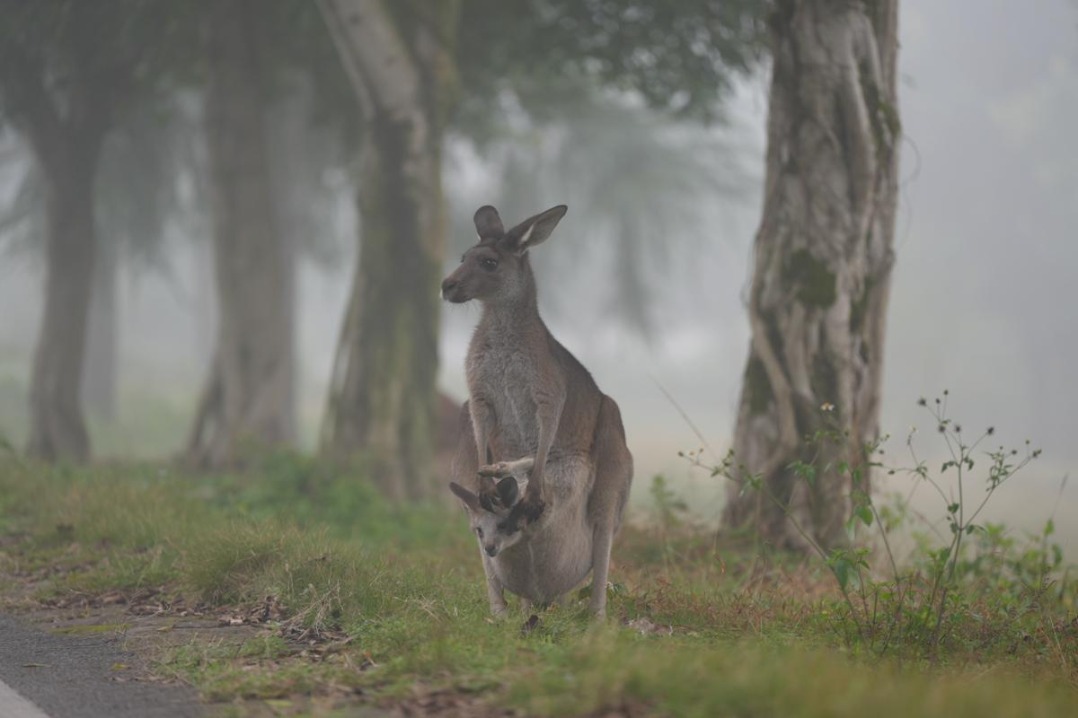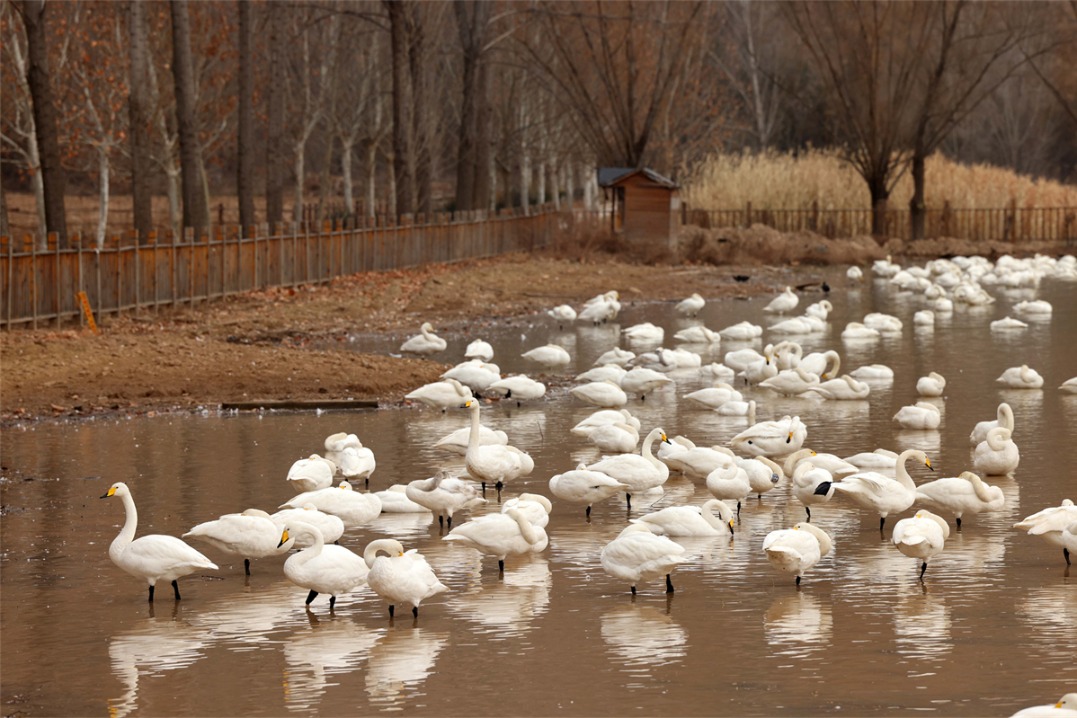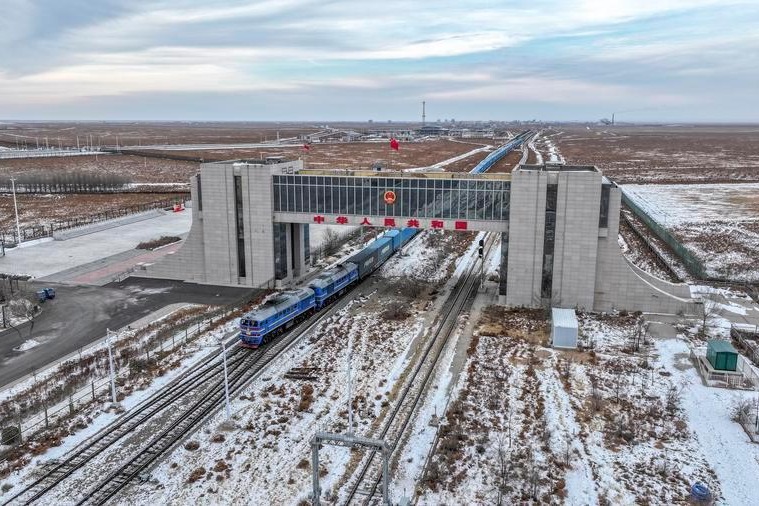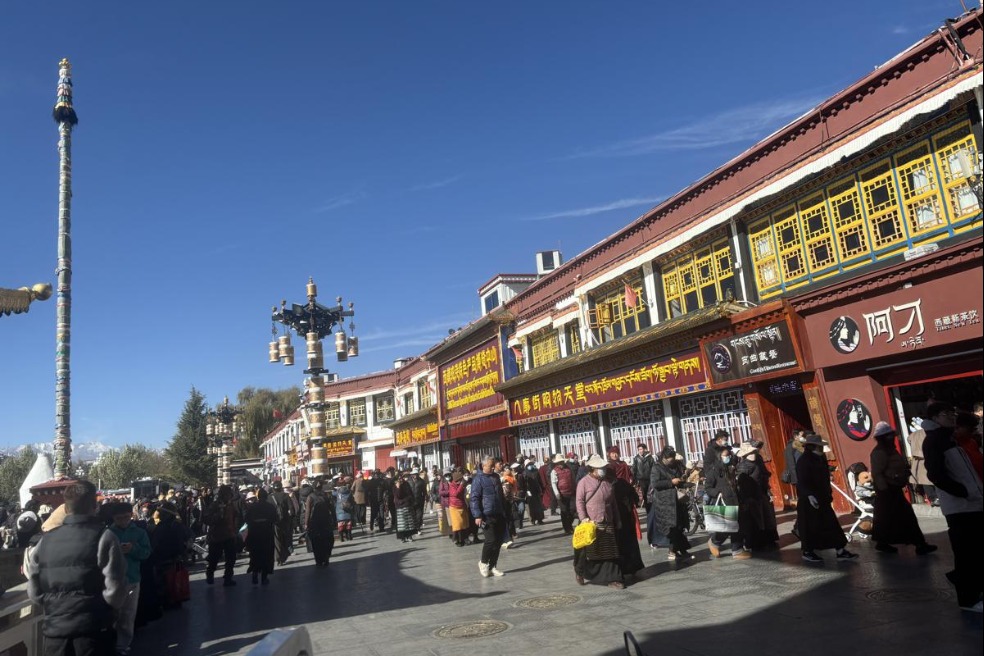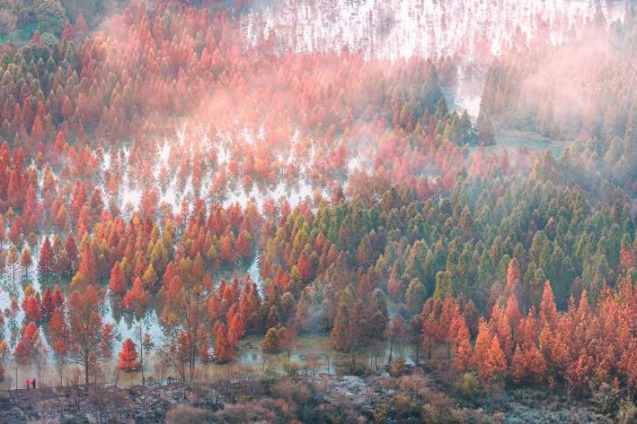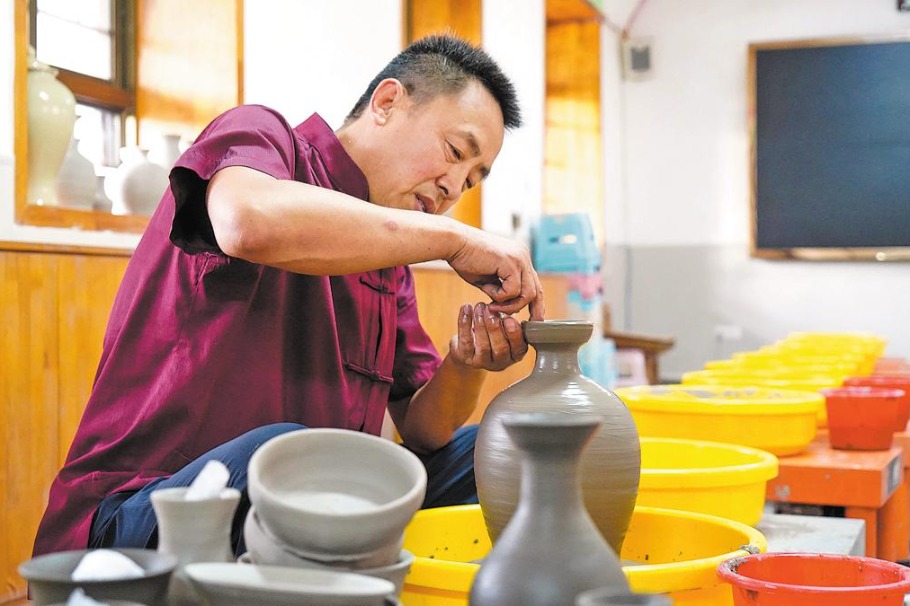Nobody turns his nose up at this lucky piggery


With the Year of the Pig in the Chinese zodiac approaching around the corner, hogs raised in Shangtangjie, a village in Taizhou's Xianju county, are probably the luckiest herd in the nation, living a carefree life in a pigpen ringed by fragrant flowers.
The 800-sq-m collective cottage where 80 pigs are kept recently went viral on the Internet as tourists gasped with admiration for the clean and fragrant piggery, with flowers growing around it.
This is in sharp contrast with the squalid, foul-smelling scene seven years ago, when each household in the village let their swine roam free around their houses. "During the summer days, it just stank, with flies buzzing everywhere," recalled Xu Zibing, Party secretary of the village in Zhejiang province.
To clean up the mess, Xu, a successful businessman who previously operated a supermarket in Qujing, Yunnan province, started by demolishing his and his parents' pigsty on returning to his hometown in Xianju.
Xu raised 700,000 yuan ($102,000) to build a village trash disposal facility.
Fellow villagers in Shangtangjie followed suit, tore down their sites and relocated their herds to the new piggery.
Today, the village is a rural attraction, with 4,000 to 5,000 tourists flocking there daily during peak seasons.
The village is just one high point of the Green Rural Revival Program in Zhejiang, which the province launched in 2003 to restore the environment through management and recycling of water and waste, targeting thousands of heavily polluted villages that were on the brink of extinction.
Over 15 years of development and continuous efforts from the provincial government all the way down to village-level administrations and farmers, the program has carved out a path of rural revitalization and laid a solid foundation for sustainable development in rural areas.
In Jinhua's Pujiang county, in Zhejiang, a place famed for its crystal ware manufacturing, over 1,400 mills used to discharge industrial wastewater into the Cuihu section of the Puyang River, seriously polluting the water and turning its clear stream into a "milky-white river".
The county churned out 85 percent of the world's hot fix crystal, and that industry has brought it huge wealth. Pujiang's urban residents tripled their per capita annual disposable income from 9,500 yuan in 2003 to 30,700 yuan a decade later.
But the industry's cutthroat competition and lax regulation took a toll. By 2013, Pujiang was among the worst polluted counties in China.
More than 500 of its water sources were milky-white, and another 25 had turned black.
"Back then, everybody was just chasing their own economic interests, and reckless sewage water handling became the norm," said Huang Min, of Pujiang county's environmental protection bureau.
The local county authority undertook a large-scale industrial upgrade four years ago to move all the crystal manufacturing to its new industrial park and introduced advanced technologies to process industrial garage and wastewater to make them pollution-free.
The efforts paid off. Taxation from crystal manufacturing rose an astonishing fivefold from 2014 to 2018, and farmers' living standards improved through the thriving rural tourism sector.
"When Erik Solheim, former head of the UN Environment Programme visited Pujiang in April, he said he was amazed to see the achievements Zhejiang province has made in environmental protection in just a few years' time, while it might take far longer in the West," said Fang Yuan, head of Pujiang's environmental protection bureau.
Contact the writers at mazhenhuan@chinadaily.com.cn and wangxiaoyu@chinadaily.com.cn
- China-led livestock project in Mauritania wins poverty reduction award
- Investigation finds barium azide friction caused chemical blast in Shandong
- Human activity on Qinghai-Tibet Plateau dates back 100,000 years
- China launches scientific-computing agent for supercomputing network
- Investigation launched after abnormal death of infant in Hefei
- Fujian high court retries father in girl's torture death
















